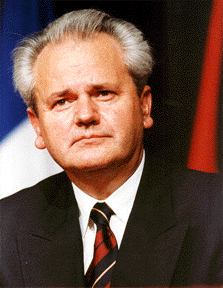In 2001, Slobodan Milosevic, the then President of Serbia, decided to call for elections, confident that he would emerge victorious. However, his opponent Vojislav Kostunica surprisingly won the election. Milosevic disputed the results, claiming that Kostunica did not receive the necessary 50% of the vote to avoid a runoff. This triggered public protests, and despite Milosevic's attempt to maintain his grip on power, the police and army refused to support his regime. Consequently, on October 6th, 2001, Milosevic was compelled to step down as President of Serbia.
Slobodan Milosevic had been a dominant figure in Serbian politics since the late 1980s, and his regime had been marked by authoritarianism, nationalism, and a series of wars that left the country devastated. However, despite his efforts to hold onto power, his reign came to an end in 2001, following a disputed election and widespread protests.
Milosevic had called for early presidential elections in September 2000, hoping to secure a mandate from the people and extend his grip on power. He was confident of victory, as his party, the Socialist Party of Serbia (SPS), had controlled the state media and used it to promote his image and policies. Moreover, Milosevic had successfully suppressed opposition voices through intimidation and violence, including the brutal crackdown on ethnic Albanians in Kosovo in 1999.
However, to Milosevic's surprise, the main opposition candidate, Vojislav Kostunica, won the election, receiving over 50% of the vote. Milosevic, however, refused to accept the results, claiming that Kostunica had not achieved the necessary majority to avoid a runoff election. This triggered a wave of protests, with people taking to the streets to demand that Milosevic step down.
The protests were initially met with a heavy-handed response from the police and security forces, who used tear gas and batons to disperse the crowds. However, as the protests grew in size and intensity, the security forces began to desert Milosevic, unwilling to use force against their own people. The army, in particular, refused to intervene, stating that it would not be used to suppress the protests.
As the crisis deepened, Milosevic's grip on power began to slip. The opposition coalition gained support from a broad range of groups, including trade unions, student organizations, and even some members of the ruling party. Milosevic's own support base began to erode, with many of his former allies defecting to the opposition.
Finally, on October 5th, 2000, after three days of protests and clashes with the security forces, Milosevic was forced to concede defeat and recognize Kostunica as the winner of the election. He initially tried to negotiate a power-sharing arrangement with the opposition, but this was rejected, and he was eventually forced to resign as President of Serbia on October 6th, 2000.
The fall of Milosevic was a significant event not just for Serbia but for the wider region. It marked the end of an era of nationalist authoritarianism and opened the way for a more democratic and pluralistic politics in Serbia. The opposition coalition that had brought down Milosevic went on to form a government and implement a series of reforms, including the establishment of a new constitution and the introduction of free and fair elections.
However, the legacy of Milosevic's regime continued to cast a long shadow over the region. The wars in Bosnia and Kosovo had left deep wounds, and the process of reconciliation and reconstruction would take many years. Moreover, the fall of Milosevic did not bring an end to the challenges facing Serbia, including corruption, poverty, and political polarization.
 >
>